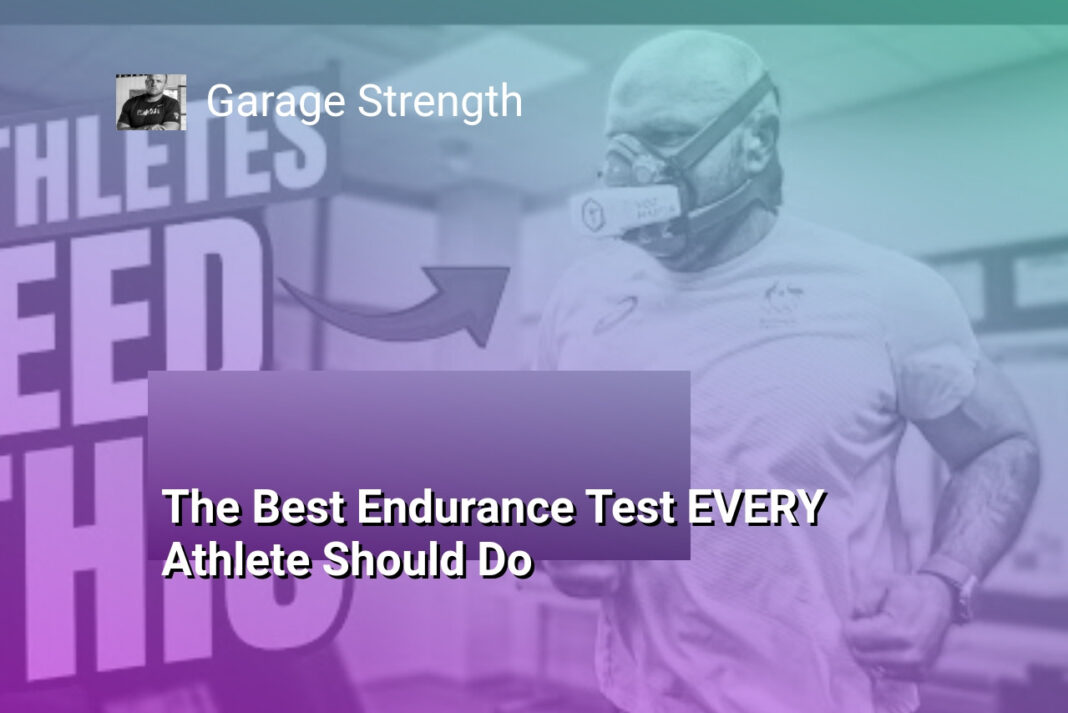The Bottom Line:
- I took a VO2 Max test to measure my aerobic capacity and understand my cardiovascular health, as I have previously struggled with being overweight.
- The VO2 Max test measures how much oxygen your body can utilize during exercise, which is an important indicator of longevity and overall health.
- I wanted to establish a baseline VO2 Max score at age 40 so I can track my progress over time and work to improve my aerobic fitness.
- The test was challenging and uncomfortable, but provided valuable insights into my current fitness level and areas for improvement.
- Based on the test results, I plan to incorporate more high-intensity interval training and hill running to increase my VO2 Max and optimize my cardiovascular health.
The Importance of VO2 Max Testing
The Benefits of Optimizing VO2 Max for Athletes
Maximizing aerobic capacity, as measured by VO2 max, is a crucial aspect of athletic performance and overall health. VO2 max, the maximum volume of oxygen an individual can utilize during intense exercise, is a direct indicator of cardiovascular fitness and endurance. For athletes, understanding and optimizing their VO2 max can provide significant advantages in their respective sports.
The Correlation Between VO2 Max and Athletic Performance
VO2 max is particularly important for athletes competing in endurance-based sports, such as long-distance running, cycling, and swimming. A higher VO2 max allows the body to more efficiently transport and utilize oxygen, enabling the athlete to sustain higher exercise intensities for longer durations. This translates to improved performance, as athletes can maintain a faster pace or cover greater distances before reaching the point of fatigue.
Additionally, VO2 max is a crucial factor in sports that require repeated high-intensity efforts, such as soccer, basketball, and hockey. These sports demand a combination of aerobic and anaerobic fitness, and a higher VO2 max can enhance an athlete’s ability to recover between these intense bursts of activity, ultimately improving their overall performance.
Monitoring VO2 Max for Optimal Training and Performance
Regular VO2 max testing allows athletes to establish a baseline and track their progress over time. By monitoring changes in their VO2 max, athletes can gain valuable insights into the effectiveness of their training regimen and make adjustments as needed. This information can be used to fine-tune their training plans, optimize their training intensity and volume, and ensure they are reaching their full potential.
Furthermore, VO2 max testing can help identify areas for improvement, such as cardiovascular efficiency or muscle recruitment patterns. Armed with this knowledge, athletes can tailor their training to address these specific weaknesses, leading to more targeted and effective improvements in their overall fitness and performance.
In conclusion, VO2 max testing is a powerful tool for athletes seeking to optimize their aerobic capacity and achieve their full potential. By understanding the relationship between VO2 max and athletic performance, and regularly monitoring their progress, athletes can make informed decisions about their training and ultimately enhance their competitive edge.
Understanding Sports Depth and VO2 Max
Exploring the Relationship Between Sports Depth and VO2 Max
When it comes to understanding the importance of VO2 max testing for athletes, it’s crucial to explore the connection between sports depth and aerobic capacity. VO2 max, which measures the maximum amount of oxygen an individual can utilize during exercise, plays a vital role in athletic performance across different sports.
The Five Levels of Sports Depth
Sports can be categorized into five distinct levels of depth, each with its own unique demands on the athlete’s physiology. These levels are based on the relative importance of impulse, endurance, speed, and strength.
1. **Power-Based Sports**: These sports, such as weightlifting and sprinting, primarily rely on short bursts of power and minimal endurance requirements.
2. **Intermediate Endurance Sports**: Sports like football, where athletes need some endurance but not to the same extent as those in deeper sports, fall into this category.
3. **Interval-Based Sports**: Wrestling, MMA, and other sports that involve high-intensity, intermittent efforts belong to this “keystone” level, where VO2 max becomes increasingly important.
4. **Continuous Endurance Sports**: Soccer, lacrosse, and field hockey are examples of sports in this category, where sustained aerobic capacity is crucial for performance.
5. **Endurance-Dominant Sports**: Distance running, swimming, and cycling are sports where endurance is the primary determinant of success, and VO2 max is a critical factor.
The Importance of VO2 Max Across Sports Depth
As the sports depth increases, the significance of VO2 max becomes more pronounced. In the lower-depth sports, VO2 max may have a smaller impact, as power and strength are the primary determinants of performance. However, as we move up the depth levels, VO2 max becomes increasingly crucial, particularly in the interval-based, continuous endurance, and endurance-dominant sports.
By understanding the relationship between sports depth and VO2 max, athletes and coaches can better tailor their training and testing strategies to optimize performance. Incorporating VO2 max testing and targeted training to improve aerobic capacity can provide a significant competitive edge, especially in the higher-depth sports where endurance plays a vital role.
The VO2 Max Test: What to Expect
Understanding the VO2 Max Test Process
The VO2 max test is a comprehensive assessment of an individual’s aerobic capacity, which is a crucial indicator of overall cardiovascular health and athletic performance. During the test, participants are typically asked to either run on a treadmill or cycle on a stationary bike while wearing a specialized mask that measures the amount of oxygen they inhale and the carbon dioxide they exhale.
Preparing for the VO2 Max Test
Before the test, participants are often advised to avoid strenuous exercise for at least 24 hours and to refrain from consuming caffeine or other stimulants, as these can affect heart rate and respiratory function. It’s also important to wear comfortable, breathable clothing and to stay hydrated throughout the process.
The Test Procedure
During the VO2 max test, the intensity of the exercise is gradually increased, either by raising the incline of the treadmill or the resistance on the stationary bike. This progressive increase in intensity continues until the participant reaches their maximum heart rate and can no longer maintain the required pace. Throughout the test, the specialized mask measures the participant’s oxygen consumption and carbon dioxide production, which are used to calculate their VO2 max.
The test can be physically and mentally challenging, as participants are pushed to their limits. Many describe feeling a sense of claustrophobia or discomfort due to the tight-fitting mask, but most are able to adapt to the sensation after a few minutes. The test typically lasts between 8 to 12 minutes, with the intensity increasing every 2 minutes.
Once the test is complete, the participant’s VO2 max score is calculated, providing a valuable benchmark for their aerobic fitness. This information can then be used to develop personalized training programs and track improvements over time.
Overall, the VO2 max test is a valuable tool for athletes and fitness enthusiasts looking to optimize their aerobic capacity and overall health. By understanding the process and what to expect, individuals can approach the test with confidence and use the results to inform their training and wellness goals.
Improving VO2 Max Through High-Intensity Interval Training
Harnessing the Power of High-Intensity Interval Training for VO2 Max Improvement
One of the most effective ways to enhance your VO2 max, a key indicator of aerobic capacity, is through the implementation of high-intensity interval training (HIIT). This training approach involves alternating periods of intense exercise with periods of active recovery or rest. By pushing your body to its limits during the high-intensity intervals, you can stimulate adaptations that lead to significant improvements in your VO2 max.
The Science Behind HIIT and VO2 Max
The underlying principle behind the effectiveness of HIIT for VO2 max enhancement is the body’s ability to adapt to the demands placed upon it. During the high-intensity intervals, your body is forced to work at a level that challenges your cardiovascular system, requiring it to deliver more oxygen to the working muscles. This increased oxygen demand triggers physiological adaptations, such as an increase in the number and size of mitochondria, the powerhouses of your cells, as well as improvements in the efficiency of oxygen utilization by the muscles.
Designing an Effective HIIT Regimen
To maximize the benefits of HIIT for VO2 max improvement, it’s important to structure your training sessions carefully. Aim to incorporate HIIT workouts into your routine at least once a week, with each session lasting between 20 to 30 minutes. During the high-intensity intervals, strive to reach 90% or more of your maximum heart rate, maintaining this effort for 3 to 5 minutes. Follow each high-intensity interval with a recovery period of 2 to 3 minutes, allowing your heart rate to drop before repeating the cycle.
Over time, as your fitness level improves, you can gradually increase the duration and intensity of the high-intensity intervals, as well as the number of intervals performed. Remember to balance your HIIT sessions with other forms of aerobic training, such as steady-state cardio, to ensure a well-rounded approach to improving your overall aerobic capacity.
By incorporating high-intensity interval training into your fitness regimen, you can unlock the full potential of your VO2 max and enhance your athletic performance and overall health.
Analyzing the Test Results and Moving Forward
Analyzing the Test Results and Moving Forward
The VO2 max test provided valuable insights into my current aerobic capacity. While the test result of 42 was lower than expected, it serves as an important baseline that I can use to track progress over time. It’s clear that I need to focus on improving my VO2 max through targeted training strategies.
Incorporating High-Intensity Interval Training (HIIT)
One key area of focus will be incorporating more high-intensity interval training (HIIT) into my routine. As mentioned, HIIT workouts that push me to 90% of my maximum heart rate for 3-5 minutes, followed by 2-3 minutes of recovery, can be highly effective in improving VO2 max. I plan to dedicate at least one session per week to this type of interval-based training, gradually increasing the duration and intensity over time.
Emphasizing Hill Training and Assault Bike Work
In addition to HIIT, I will also place a greater emphasis on hill training and assault bike work. Running hills at a higher pace will challenge my cardiovascular system and help develop the strength and power needed to improve VO2 max. Similarly, the assault bike allows me to target my aerobic capacity through intense, full-body workouts.
By regularly testing myself on the VO2 Master, I can track my progress and make adjustments to my training plan as needed. The goal is to see a steady improvement in my VO2 max over the coming months and years, which will not only benefit my athletic performance but also my overall health and longevity.





